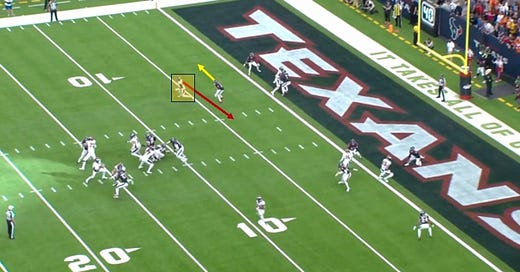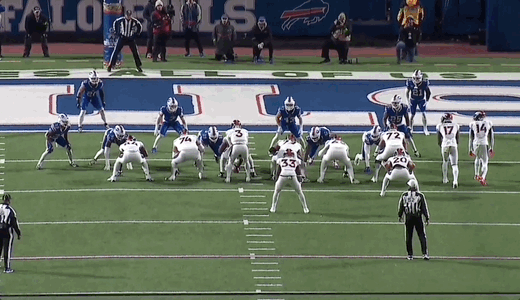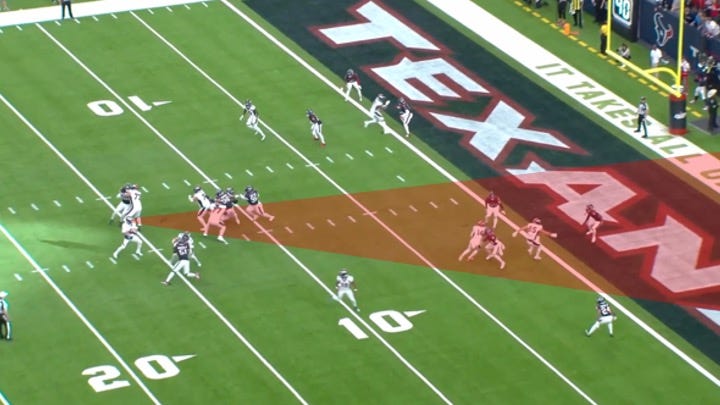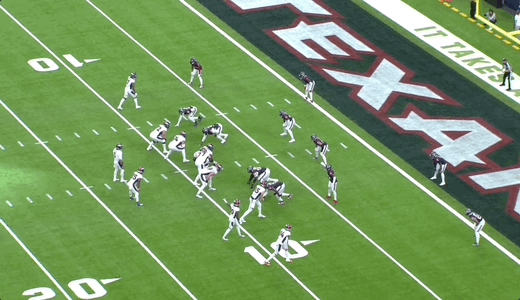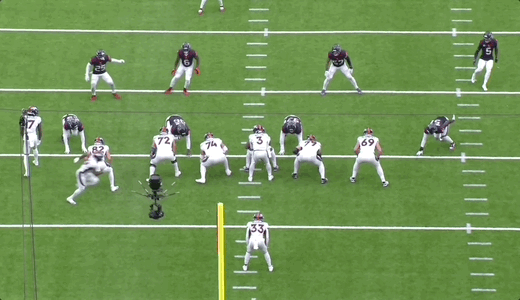Russell Wilson’s time in Denver could be easily characterized as a disappointment. There were expectations that he could help turn the Broncos into a contender. That obviously never quite materialized.
But while the perception of Russell Wilson’s abilities as a quarterback have taken a hit over the last two years, the reality is that he can still play the position effectively. Most importantly, he is still a very accurate passer who protects the ball but also has the ability to make big time throws.
Last season, despite operating behind an offensive line that was one of the worst in the NFL (5th highest pressure % allowed), he completed over 66% of his passes and had a 26-8 TD-INT ratio in 15 games.
And according to PFF, Wilson also had the 6th-highest completion percentage in the NFL on throws at the intermediate level (10-19 yards from the line of scrimmage). Those are the types of throws that generally aren’t layups or completions that come merely as the result of great scheme.
Then, of course, you have Wilson’s ability to make plays outside of structure:
While he’s definitely lost a step, Wilson rushed for 265 yards off of scrambles in 15 games last year (PFF).
The issue with Wilson’s game has always been about his ability to see the field, play with timing, and make throws out of confined pockets. A part of that has to do with his height and actual ability to see over the line. A part of that has to do with an over-reliance on his outstanding ability to make 2nd-reaction plays.
Even in his prime, this was a big reason for any inconsistency we saw from Wilson. The run-around scramble plays are fun, but you can’t rely on them as a consistent form of offense.
Wilson’s tendency to try and create has the trade-off of either getting the offense off track with negative plays or missing opportunities for big completions that exist within the framework of the passing game. He has left a ton of plays on the field throughout his career as a result.
Take a play like this from last season, for instance. The Broncos trailed the Texans by 5 with just 20 seconds left and no timeouts.
To the right, Denver would start in a trips bunch before motioning Jerry Jeudy across the formation. You can see the route combo below:
Wilson looked to his right first. But the two vertical routes would be swallowed up by the defense:
If Wilson had then come down to the left to Jeudy, who ran a jerk-route and would be wide open, this would have been an easy game-winning touchdown:
But Wilson never got to Jeudy. This was because he aggressively moved up in the pocket at the top of his drop when he did not need to. That brought him into pressure:
Wilson would end up locking onto Courtland Sutton in the back of the end zone, but the throw was impacted by pressure and it sailed over his head:
He would throw an interception on the next play and Denver would ultimately lose the game.
This type of play was not a one-off last year and it hasn’t been throughout Wilson’s career.
Wilson has also relied too much on his athletic ability at times and has often played with what appears to be an approach of looking to run if his first receiver or two aren’t open. The problem now is that he isn’t as elusive as he once was:
Despite his ability to still make some plays using his legs and scrambling ability, he can’t make quite as many. That means Wilson has to play from the pocket and within the structure of the offense more often to be effective. He has to be more of a timing and rhythm passer. But he’s never been that type of quarterback.
It’s become especially evident against the blitz in recent seasons, where Wilson ranked 20th in passer rating in 2023 and 31st in 2022.
Wilson’s inability to get rid of the ball on time has resulted him him being the most sacked quarterback in the NFL over the last 5 seasons. He’s been sacked at the 7th-highest frequency during that span when viewing it on a per-game and per attempt basis.
The Steelers are definitely better off with Wilson at the helm than Kenny Pickett, but I’m not sure he’s enough to make them a true contender in a stacked AFC.
Check out the rest of the rankings here:
#32 Bo Nix (Denver Broncos)
#31 Drake Maye (New England Patriots)
#30 J.J. McCarthy (Minnesota Vikings)
#29 Gardner Minshew (Las Vegas Raiders)
#28 Will Levis (Tennessee Titans)
#27 Deshaun Watson (Cleveland Browns)
#26 Anthony Richardson (Indianapolis Colts)
#25 Bryce Young (Carolina Panthers)
#24 Daniel Jones (New York Giants)
#23 Jayden Daniels (Washington Commanders)
#22 Caleb Williams (Chicago Bears)
#21 Geno Smith (Seattle Seahawks)
#20 Russell Wilson (Pittsburgh Steelers)
#19 Derek Carr (New Orleans Saints)
#18 Baker Mayfield (Tampa Bay Buccaneers)
#17 Kyler Murray (Arizona Cardinals)
#16 Trevor Lawrence (Jacksonville Jaguars)
#15 Jared Goff (Detroit Lions)
#14 Tua Tagovailoa (Miami Dolphins)
#13 Kirk Cousins (Atlanta Falcons)
#12 Jalen Hurts (Philadelphia Eagles)
#11 Brock Purdy (San Francisco 49ers)
#10 Jordan Love (Green Bay Packers)
#9 Dak Prescott (Dallas Cowboys)
#8 C.J. Stroud (Houston Texans)
#7 Justin Herbert (Los Angeles Chargers)
#6 Aaron Rodgers (New York Jets)
#5 Matthew Stafford (Los Angeles Rams)
#4 Lamar Jackson (Baltimore Ravens)
#3 Joe Burrow (Cincinnati Bengals)
#2 Josh Allen (Buffalo Bills)
#1 Patrick Mahomes (Kansas City Chiefs)

